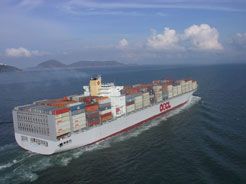Conduct Extensive Due Diligence on all new customers/distributors particularly in high risk countries.
This includes reference checks from existing manufacturer clients as well as from leading retailers in his home country. Visit each new distributor’s office and warehouse to calibrate the size of his business with other principals. Each new candidate should complete a one page Distributor Fact Sheet.
Beware of Distributors without a web site !
2. Ship Directly to Distributor in his home country.
Do not allow for distributor sponsored consolidation at a USA port such as Jersey City, Miami, or Los Angeles during the initial launch phase. Allow distributor pick-up at your factory only after your relationship and brand have been established for a year or more.
3. Label your product in the local language.
Stickering is acceptable only if it is done in the destination country or at your own in-house contractor.
4. Sell only to distributors based in your target country.
Product shipped to USA based international consolidators has little incentive to leave USA ports. Export Solutions Distributor Directory contains more than 7,300 Distributors in 96 countries.
5. Create an “International package”.
This could be multilingual label or a different size. One tactic is to label packages or cases “Export Only”. This reduces the risk of it being diverted back to the domestic market.
6. Design your International Price structure with a principal of one base list price plus freight charges.
This prevents one country from enjoying a price advantage.Display extreme caution when selling at less than 90 % of your USA list price.
7. Reward Export Department performance on achievement of retail distribution, profitability, as well as sales volume objectives.
Volume based objectives alone may encourage questionable shipments that could be diverted.
8. Organizational Alignment between Export and Corporate Headquarters.
Diverting tends be minimal when the Export Department reports to the VP of Domestic Sales ( minimum:dotted line) versus solely to a separate “International” organizational silo.
9. Leverage technology to alert you to unusual order patterns outside of historical trends.
Analyze international Nielsen/Euromonitor consumption data to compare versus shipments to the market.
10. Unannounced international market visits to check retail outlets and distributors warehouses can confirm a diverting problem.
Visit stores independently, without a distributor “tour guide” . This will allow you to capture an accurate view of the market.


